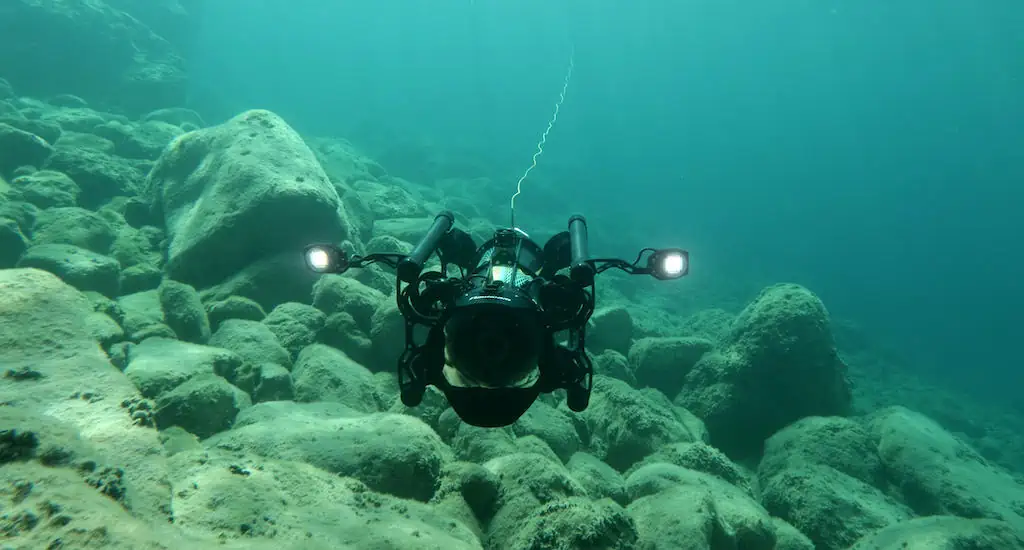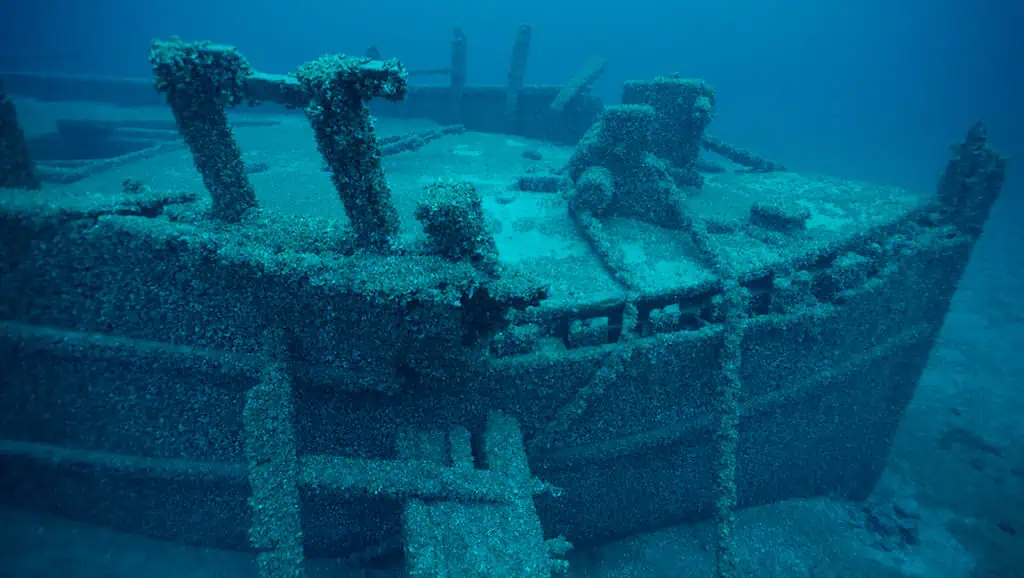
Documentary filmmakers Yvonne Drebert and Zach Melnick used Boxfish Robotics’ Boxfish Luna ROV and its ultra-low-light, high resolution camera system to discover an intact shipwreck.
The wreck was discovered off the west coast of Lake Huron’s Saugeen-Bruce Peninsula in Ontario, Canada. Believed to be the Africa, the ship hasn’t been seen since 1895, when the vessel disappeared in stormy seas with her entire crew of eleven sailors.
Resting hundreds of feet below the surface, the team used an underwater drone, also known as an ROV, to find and identify the wreck.
Melnick and Drebert are a husband-and-wife filmmaking team that specializes in underwater videography using remotely operated vehicles (ROVs). Their ROV, a Boxfish Luna, has an ultra-low-light, high resolution camera system, and is one of only a handful like it in the world.
For the last two years, the team has been in production on a feature-length documentary called All Too Clear, which uses the ROV to tell the story of life in the Great Lakes from an underwater perspective.
The water was rough on the day of the expedition, but the ROV successfully descended 85 meters, nearly 280 feet, to the lakebed below. Melnick was piloting the ROV from a control station in the boat’s cabin, which allows the crew topside to see through the ROV’s camera in real-time.
“We were down for only a few minutes when a huge structure loomed up from the depths – it was a shipwreck. We couldn’t believe it.”
Identifying the vessel came with its own challenges, despite the apparent ease of the discovery. The ship was encrusted in invasive quagga mussels, a cousin of the zebra mussel that has outcompeted its more infamous relation since arriving in the Great Lakes about 30 years ago.
Quaggas now carpet the bottom of the lakes by the quadrillions. Melnick and Drebert’s documentary, All Too Clear, explores how quaggas are re-engineering the ecosystem of the Great Lakes at a scale not seen since the glaciers.
The team enlisted local maritime historian, Patrick Folkes, and marine archaeologist, Scarlett Janusas, to help identify the ship. After receiving their archaeological license from the province of Ontario, the filmmakers returned to the ship with their ROV to film and measure the vessel, as well as look for more clues to help confirm its identity.

After some initial research, the Africa stood out as a strong possibility. Originally built in 1873 to haul both passengers and freight. The ship burnt to the waterline in 1886 and was rebuilt as a steam barge to haul cargo exclusively.
On the morning of October 4th, 1895, the Africa departed from Ashtabula, Ohio with the barge Severn in tow. Both vessels were loaded with coal and bound for Owen Sound, Ontario – but neither would make it to the destination. In the fury of an early season Lake Huron snowstorm, the towline between the Africa and the Severn was cut.
The Severn ran aground and broke up on the western shoals of the Bruce Peninsula – one of dozens of ships to be claimed by the Peninsula’s rocky waters. While the crew of the Severn was eventually rescued, the Africa was never seen again, and all eleven sailors were lost.
At 148 feet long, 26 feet wide, and 12.5 feet high, the Africa was no small craft. Matching measurements from the second ROV dive, along with the presence of coal littering the lake bottom around the vessel, was the evidence the team needed to confirm the ship is indeed the Africa.
In an interesting twist, Melnick and Drebert’s home on the Bruce Peninsula is in Larsen Cove – named for the captain of the ill-fated Africa – Hans P. Larsen. The Severn foundered just a few hundred meters to the south of their residence.
“We received a tip that scientists doing an offshore fish survey had noticed an anomaly on their sonar readout, basically an unusual bump on an otherwise flat lakebed,” explains Melnick. “Before discovering the Africa, our work focused on the ecological impacts of the mussels – which have devastated fisheries around the lakes. We hadn’t considered the effect they could have on our cultural heritage, but the mussels have truly changed everything in the deep waters of the Great Lakes.”
Boxfish Robotics will be at Offshore Energy Conference 2023, 28-29 November, to exhibit its autonomous solutions for offshore energy. Visit the company’s website for more information.









